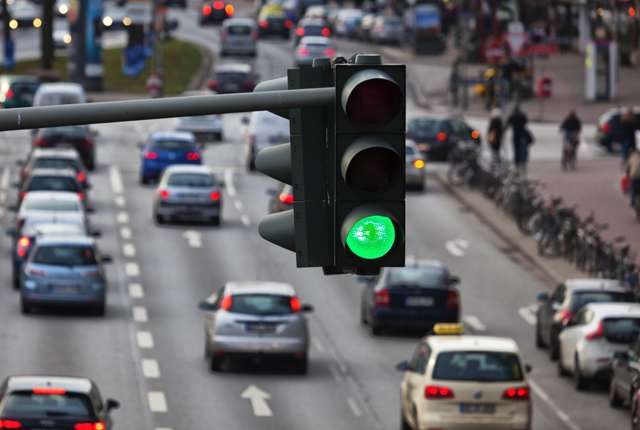Traffic-light-controlled intersections found to attract fatal accidents

Traffic accidents involving pedestrians and bicyclists have increased both in Houston and nationally in recent years, and a new report from Rice University's Kinder Institute for Urban Research found that intersections with traffic lights are nine times more likely to see fatal car crashes with pedestrians and bicyclists.
"Dangerous Crossings: The Relationship Between Intersections and Crashes in Houston" was authored by Yujie Hu, a research fellow at the Kinder Institute. Hu used colocation, which identifies patterns between two objects or events, to analyze the impact of development on pedestrian- and bicyclist-vehicle crashes at intersections in the city of Houston. The model identifies types of intersections that will likely attract such incidents.
Hu's model for predicting accidents revealed that traffic-light-controlled intersections are more than nine times as likely to have fatal crash incidents involving cars and bicycles or pedestrians than expected by chance in Houston. In comparison, intersections with stop signs were only 1.48 times as likely to have a fatal crash incident, and noncontrolled intersections were 0.5 times as likely to have a fatal incident.
On major roadways, nonsignalized intersections are also problematic, Hu said. Wide roadways such as Bellaire Boulevard, Westheimer Road and Richmond Avenue have signalized intersections that are far apart, which Hu said contributes to crash incidents at intersections without signals or signs when pedestrians jaywalk. Hu said that more pedestrian crosswalks with signals at closer intervals may be needed on some streets.
Finally, in addition to the presence or absence of traffic signals, Hu said that intersection structure and proximity to bus and rail stops also matter. Complicated intersections with four or more roads leading into it and those that have bus and rail stops nearby are 2.4 times more likely to see a fatal accident, whereas intersections with fewer than four entry points are only 0.33 times more likely to have a fatality. Actions that simplify traffic flow at complicated intersections and considerations of how to design transit stops in safer ways, such as midblock boarding bulbs could be considered, Hu said.
Hu determined the likelihood of future accidents by assessing the overall relationship between recorded crashes and intersection types. The analysis began with the observed number of times that a particular crash type, such as a fatality, occurred near a specific type of intersection. That number was then compared with those expected to occur by chance through a series of simulation trials. If the result was a number greater than one, it indicated a colocation pattern (that is, fatalities are attracted to traffic-light-controlled intersections). If the result was less than one it denoted an isolation pattern (fatalities are separated from traffic-light-controlled intersections).
"Intersections are an important site for analysis because traffic patterns are often complex and pedestrians and bicyclists are more exposed to vehicular traffic," Hu said. "The colocation analysis shows both what physical characteristics make an intersection likely to attract future accidents and identifies specific intersections that require attention in Houston."
Hu hopes this report will help policymakers and engineers identify troublesome areas and improve street design to promote greater safety for all users.















